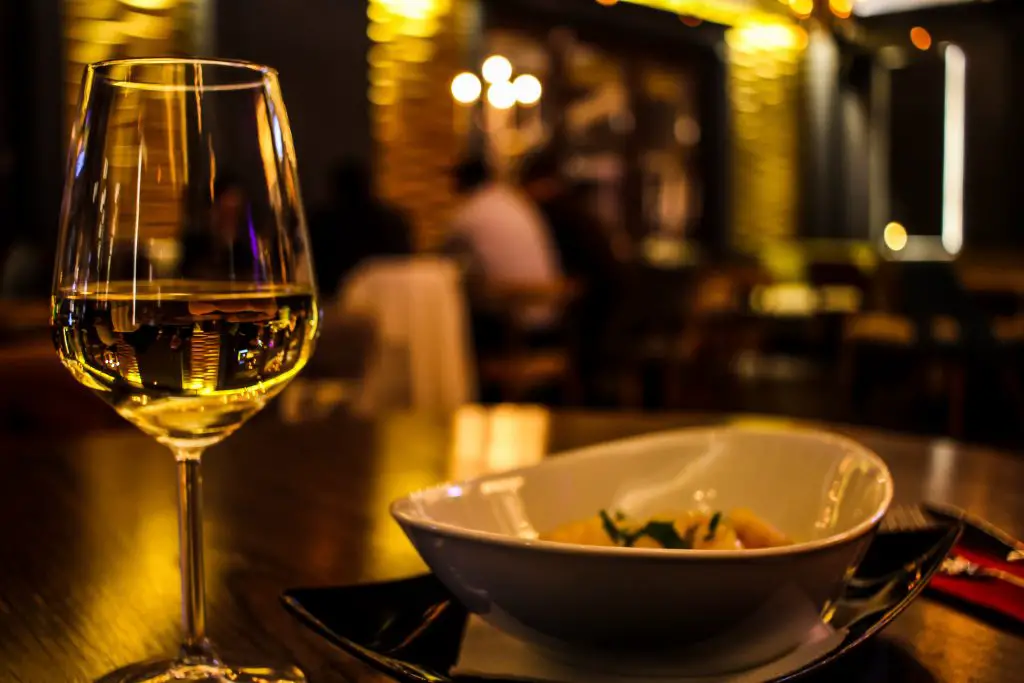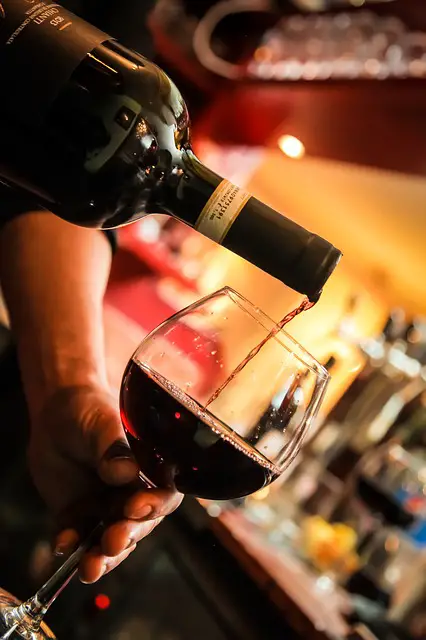Rule #1: “Like what you drink and drink what you like.”

Sometimes opposites attract, but not always with wine and food. It’s not necessary to always get to mixed up into “what must be drunk with what” according to some wine aficionado’s. However, I like the saying of “like what you drink and drink what you like.” Still, when possible, it helps to remember to match similar flavors and textures and make sure the intensity of the wine contributes to the flavor of the dish… not over-power it.
First, match wine with foods that have similar richness and texture. Think about what is going to bring out the characteristics of both. A nice acidic Chainti will pair perfectly with a tangy tomato based pasta with a pungent cheese, like parmiggiano. A light, crisp and fragrant Vernaccia white from San Gimignano in Tuscany is well suited for all seafood dishes, and light cream sauces. Vermentino, a white grape varietal grown in Sardinia and other areas along the Mediterranean coast, makes another perfect seafood pairing.
Balance tastes. Remember that salty and sour tastes in food will make wines taste milder (fruitier and less acidic), whereas most sweet and savory tastes make wines taste stronger (drier and more astringent).
Always try to balance the acidity of the food to the wine. Pinot Grigio‘s are great with citric based foods like lemon chicken or light and floral soups or stews. If you’re drinking a desert wine that is very sweet like a Vin Santo, have a nice biscotti or torte. The wine should always be just as sweet, or sweeter than what you’re eating.
Light, Medium and Full-bodied wines: When you are cooking, remember that light body wines like Pinot Grigio or Soave go well with steamed, lightly sautéed, or poached foods. Medium and full-bodied wines like Montepulciano d’Abruzzo, Brunello or Barolo go better with grilled, roasted, or baked dishes that have intense flavors. Acidic wines like Barbera from the Piedmont region work well with salty dishes. Try to work with the body of the wine and the depth of the meal.
Poultry. Game birds such quail, turkey, duck, and squab have earthy flavors that are more robust than chicken. Because of this, you should pair them with wines that can pick up those characteristics of spice and earth. A beautifully balanced Amarone pairs extremely nicely.
 Fish and Seafood. There is a myth that seafood must be paired with white wine – but it does not always have to be. Chianti is such a diverse wine with a dry-body that it will not ruin and hide the flavors of the sea. Mix it up a bit and explore the flavors.
Fish and Seafood. There is a myth that seafood must be paired with white wine – but it does not always have to be. Chianti is such a diverse wine with a dry-body that it will not ruin and hide the flavors of the sea. Mix it up a bit and explore the flavors.
Some shellfish, like oysters – are excellent with sparkling wine like Prosecco, Lambrusco or Asti. The salt from the sea and carbonation from the sparkling wine make a delicious combination.
Consider the region. Look at the region where the wines come from and pick foods or ingredients from that area. Italy is as diverse in its wines as it is in its cuisine. Take note of vegetables and spices that are popular in the region where the wine was sourced and seek out dishes with those characteristics. Remember that the soil that the fruits and vegetables grow in, and the grass the native animals feed upon, is the same base for the vines. They feed off the same nutrients and will therefore have similar flavors. There is a simple old food and wine pairing adage, “If it grows together, it goes together”.
When in doubt, remember rules are there to be broken… but in wine, these are simply guidelines, not musts. At the very least, follow this simple rule… if you’re eating Italian food, think about having an Italian wine.
Buon appetito – Salute!